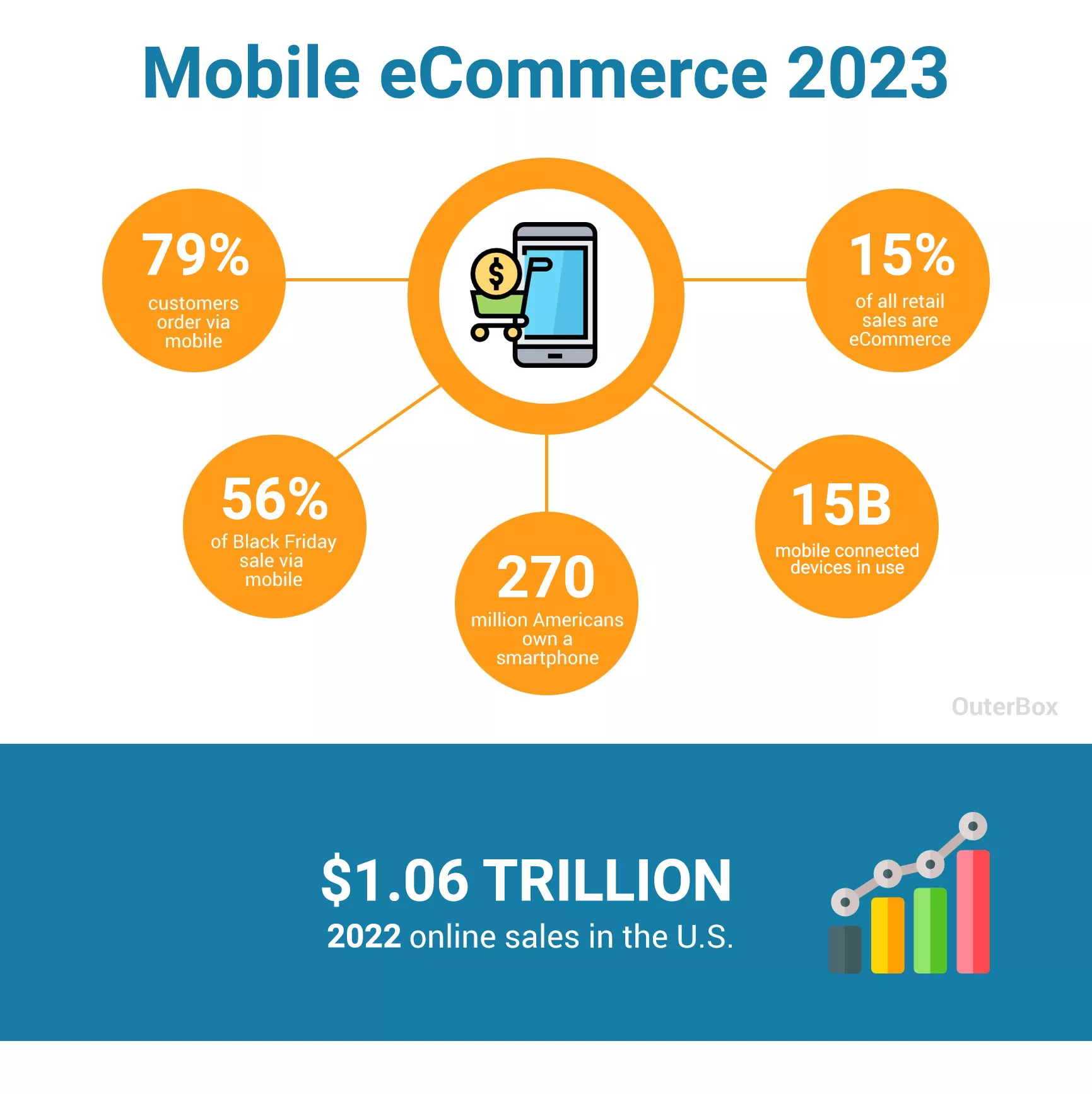Mobile eCommerce Stats in 2025: What Percentage of eCommerce Sales Are on Mobile Devices?

Back in 2015, mobile website traffic was predicted to be just as relevant as desktop traffic. As we sit here today heading into 2025, it’s reported that mobile traffic now makes up more than 60% of all website traffic, and over 70% for eCommerce traffic.
With that being said, if you own an eCommerce website, it’s more important than ever to have an easy-to-use mobile shopping experience which includes a well-designed user interface along with blazing quick site speed. You absolutely must cater to mobile users and consider mobile shopping during an eCommerce web design project or site rebuild and mobile must be a major part of your digital marketing strategy.
Not doing so is simply ignoring half of your potential customers. This has implications on how you consider the design of your eCommerce website, how you should think about eCommerce SEO and the importance of optimizing your website for mobile search results.
Not only are significantly more users accessing the web from a tablet or smartphone than a desktop, they are doing so with more eCommerce intent than ever before.
Over the last year its estimated that over 70% of all online sales came from a mobile device – a number that has been increasing year-over-year since smart phones were invented.
During the 2024 holiday season, its reported in the US consumers spent $241 billion online, an increase of around 9% from the previous year. It’s predicted that 2025 numbers follow, or exceed, the YoY growth model.
The fact is, it’s now statistically much more likely that eCommerce customers will be interacting with your website from a smartphone or tablet than a desktop. Armed with this knowledge, it’s your responsibility to create a shopping experience that appeals to your customers. Mobile shoppers are finicky, and rightfully so. With the highly competitive nature of the eCommerce industry, your customers will not hesitate to buy from your competitors if even the slightest headache arises.
Statistics show that 40% of users will go to the competitor after a bad mobile experience, yet an alarming 84% have experienced difficulty completing a mobile transaction. That is an incredibly high number, and it shows just how great the opportunity is for companies to capitalize on consumer conversion just by creating mobile responsive and user-friendly websites. It’s one reason Amazon focused on making an easy shopping experience and was able to gain a massive audience and grow.
Still not convinced? Let these statistics do the talking:
Ignoring these trends in mobile eCommerce (referred to as m-Commerce in the industry) evolution means potentially missing out on more and more profit as these trends continue. Hopefully, mobile optimization and conversion optimization are part of the SEO services offered by your web company. If you’re trying to make improvements on your own, here are some tips to make your website mobile friendly:
- Your website should be programmed to intuitively adapt to whatever device is accessing it in order to provide the most user-friendly experience
- Tap-Friendly: make sure all buttons, links and calls to action have the appropriate size and margin to prevent errors.
- Text Phone Numbers: Make sure all phone numbers are text and not images so users can tap-to-call, or copy and paste the number to share with a friend.
- Visual Content: Since mobile websites are usually viewed on the go and on much smaller screens, utilizing visual content such as infographics and videos will be preferred over reading lengthy text.
- Main Navigation: increase padding around menu items so it’s easy for the user to read and tap on menu items.
- Contact Forms: Increase form input fields so it’s easy for the user to fill out the form.
Want to see more statistics? Check out our SEO Statistics.
Digital Marketing for Mobile Devices
Google Ads & PPC
With the rise in mobile traffic, its important to consider how marketing to your customers changes on device-by-device basis. For example, a Google Ads Consultant on our team will tailor text ads, display ads and other types of PPC ads to the device. Through Google Ads you can create campaigns that target desktop and other campaigns that target mobile. It’s important to not use a one-size-fits-all approach.
SEO for Mobile
Mobile website friendliness and speed are a huge part of Google’s search algorithm. With billions are searches each day, ranking at the top of Google and utilizing Google SEO experts is a must to develop a well rounded digital marketing campaign. You can use Google Pagespeed insights tool to analyze your website and get a mobile speed score. Depending on the website platform you’re using, increasing the speed of your website may be a simple fix. If you need help improving SEO, we’re a #1 rated SEO consultant agency. You can also check our hand picked list of the best SEO companies in the world.
Responsive Website Design
When going through a website design or redesign project you must consider usability on a mobile device. It’s imperative to create mockups and layouts for mobile users and desktop users making sure the website is easy to use on both. Using responsive coding, one code base can power both versions of your website making it easy to manage and maintain. If you need help with your website project we’re WordPress web design and Shopify website development experts.
Statistics Infographic Below:

Share This Infographic: Place the code below on your website.

 ?
?
